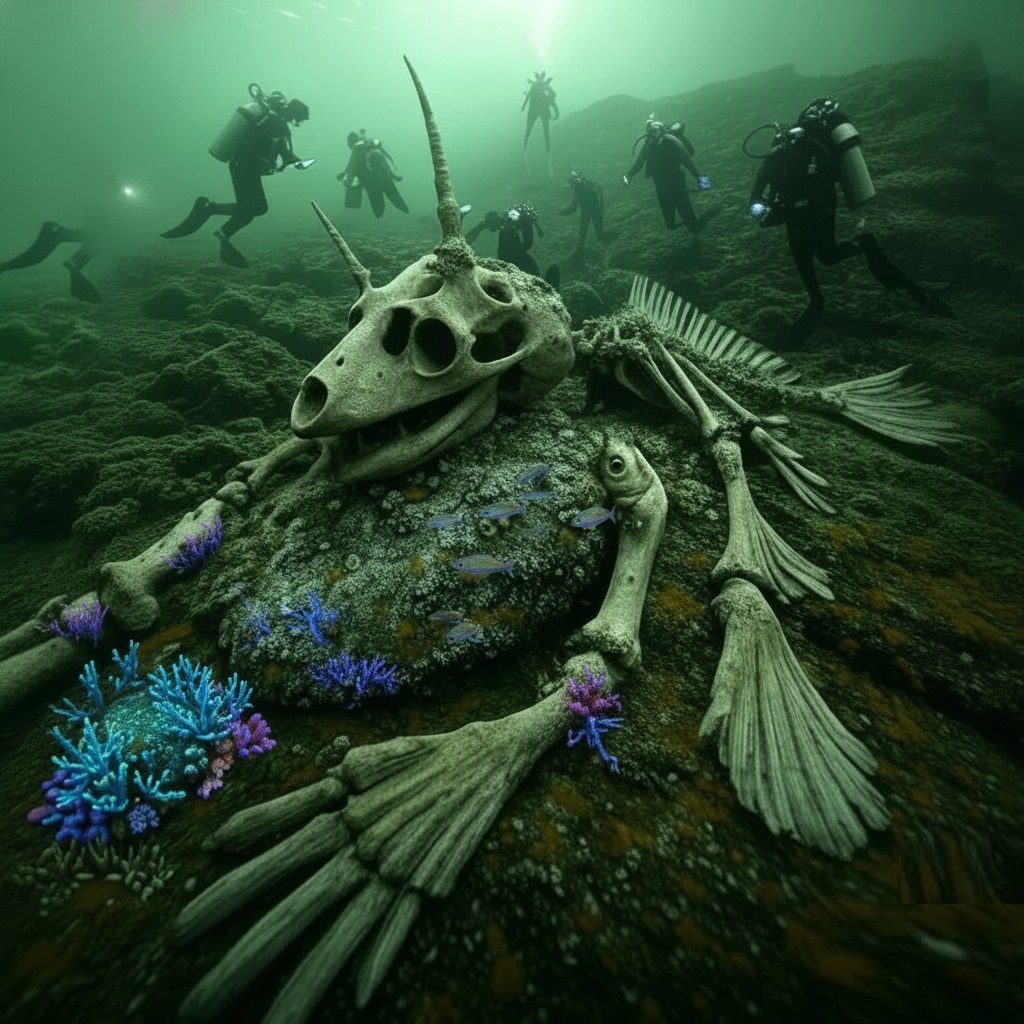The Sunken Leviathan of the Mariana Trench

The year was 2024. Humanity’s gaze, once fixed solely on the stars, had increasingly turned inward, to the last true frontier on Earth: the deep ocean. Dr. Aris Thorne, a marine archaeozoologist with a reputation for both brilliance and an almost reckless disregard for protocol, led the expedition aboard the research vessel Triton’s Spear. Their target: an anomalous seismic signature emanating from an unexplored basin within the Challenger Deep, the deepest known point in the Mariana Trench.
For weeks, the submersible Nautilus V had been mapping the desolate, crushing depths. Then, on what seemed like another routine descent, the sonar painted an image that defied all known biology. A structure of immense scale, organic yet impossibly large, lay nestled within a hydrothermal vent field.
“Get us closer,” Thorne commanded, his voice a low hum over the comms, betraying a tremor of excitement. “Full visual on screen.”
As the powerful lights of the Nautilus pierced the eternal black, a sight emerged that stole the breath from the seasoned crew. Before them, sprawled across the primordial ooze, was the fossilized skeleton of a creature of myth. It was easily two hundred meters long, a leviathan of unimaginable proportions. Its skull alone, adorned with prominent, jagged horns, was the size of a small submarine. The bone structure was alien, a hybrid of piscine grace and reptilian strength, unlike anything ever recorded in paleontological history.
“My God,” whispered Dr. Lena Hanson, the expedition’s chief geologist. “It’s… it’s real.”
The skeleton was a tapestry of deep-sea life. Anemones swayed gently from its ribs, ancient coral formations encrusted its vast spine, and bioluminescent bacteria painted intricate patterns across its fossilized surfaces. Thorne guided the sub’s manipulators, carefully sampling the rock-hard bones. The preliminary dating shocked them – over 150 million years old, placing it firmly in the Late Jurassic, a period when dinosaurs ruled the land, and true giants of the sea were thought to be well understood.
“This rewrites everything we know about megafauna evolution,” Thorne declared, a wide, almost manic grin spreading across his face. “This wasn’t just a large animal; it was an apex predator of a scale we can barely comprehend existing in such depths.”
Further investigation revealed curious details. Embedded in the skull, near where an eye socket would have been, was a perfectly preserved, iridescent scale, unlike any known material. Around the ancient ribcage, they found fragments of what appeared to be primitive deep-sea artifacts – tools or perhaps decorative items crafted from a durable, unknown alloy.
The discovery sent shockwaves through the scientific community. The “Mariana Leviathan,” as it was quickly dubbed, became more than just a fossil; it was a tantalizing clue to a lost world, a testament to the Earth’s enduring capacity for secrets. Thorne and his team spent years meticulously studying the site, finding evidence that suggested the creature had not died naturally but had been ritualistically interred, or perhaps even worshipped, by an unknown, ancient deep-sea civilization.
The mysteries only deepened. How did such a creature thrive in the crushing pressure of the Trench? What did it eat? And who, or what, had left those enigmatic artifacts? The Sunken Leviathan of the Mariana Trench was no longer just a paleontological find; it was an archaeological enigma, a silent monument to a forgotten chapter of Earth’s unfathomably long and complex history, waiting patiently for humanity to finally decipher its silent tale.
